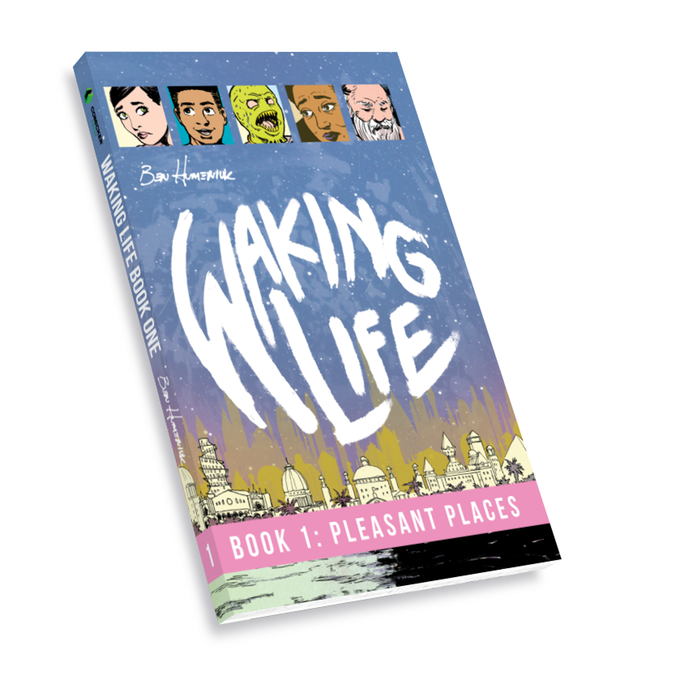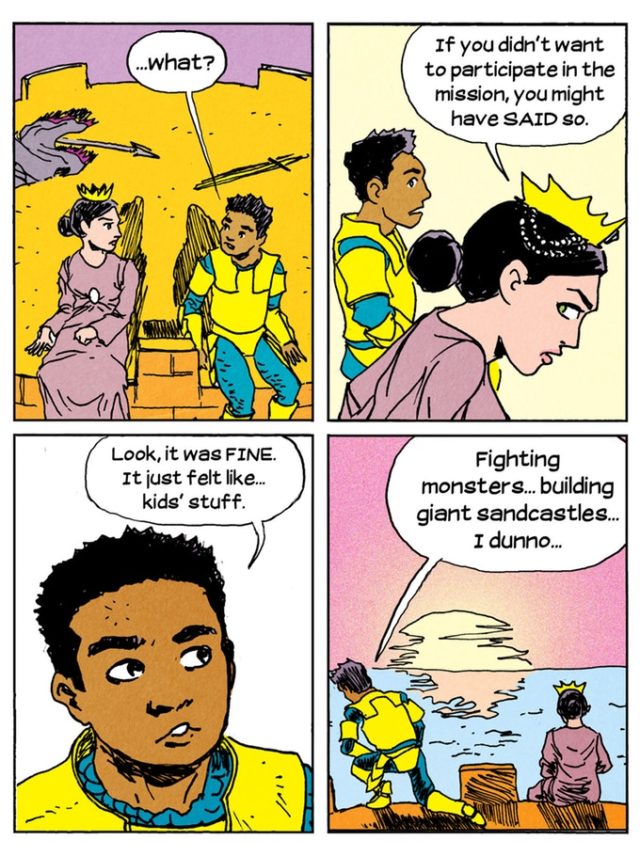
By Kristina Valdez | A&L Editor
Former Lariat cartoonist and Baylor alumnus Ben Humeniuk gives insight into the inspiration and the process behind creating his first graphic novel, “Waking Life Book One: Pleasant Places.”

In “Waking Life,” the Eternal Princess of the Dream Realm decides to enter the waking world to remain friends with Robbie, who is outgrowing the adventures of his dreams. The two characters bring their dreams to life while navigating the “waking life” and common adolescence rites-of-passage such as high school. The graphic novel will be printed as a paperback in November 2017, but the six digital novels are available on ComiXology as well as Kindle.
Humeniuk was a Lariat cartoonist for two and a half years. He joined the staff after he saw cartoons in the newspaper and thought he could do better. His favorite cartoon that he drew is a series called “Godspeed.” Look at Page 7 to see some of Humeniuk’s former cartoons.
Humeniuk graduated from Baylor in 2008 with a major in English literature and received his master’s in education from Baylor in 2011. He is currently a high school English teacher in Houston.
What was the inspiration behind “Waking Life?”
There was this old cartoon strip in the early 1900s called “Little Nemo in Slumberland.” The idea was that this boy, Nemo, would go to sleep every night and he would have adventures in this magical dream world, when he would wake up and the adventures would abruptly stop. There was this princess who was the whole reason that he would go to this dream world.
A couple of years ago there was this tribute to Little Nemo and it was called “Dream Another Dream” by a modern cartoonist who was doing their own take on the story. I saw some of the characters updated for modern times and it triggered this idea in me.
I thought, “What would be the story of the princess?” If she was this eternal teenage girl and kept having these friends who would outgrow her and leave her behind, how would she try to change that?
I got that idea in 2015 and I took notes on it for about a year before I started drawing up the rough sketch of the first two chapters.

When you were creating the character of Robbie, did you know that you wanted to make him African-American?
Yes, that was the goal from the beginning. I think some of that was driven from watching shows as a kid. I was into “Star Trek,” where race and color did not matter in terms of who the lead characters were in the show. Growing up, I would watch “The Cosby Show” or “Family Matters,” where the characters were black Americans.
I think diversity is an important feature. In young adult literature, you see increasingly diverse characters. Mainstream American comics, which are primarily superhero stories, are still largely driven by white male characters. It is important to me to make sure my characters represent diverse backgrounds and characters.

For your first graphic novel, what do you think your readers will be most excited to see?
I’m excited for people to see a story where characters consider the price of going after something they want without regarding the needs of other people. All the main characters have a journey in this story where they are essentially blind to everything except the one goal they have. They are going to learn the cost of pursuing that goal as a narrow-minded thing when they need the other people in their life to support, encourage and help them.
How does being a teacher help you develop your young characters?
I have a great target audience who gives me feedback. My [students] can read it and tell me which part confused them or which part they really liked. They also comment on how the kids are supposed to speak and whether it is authentic or it sounds like a 31-year-old man is writing this.
What is the process of creating one chapter?
It takes a while. Each chapter is designed to be about 10 pages. On average, one page should take me about a week. It’s about two and a half months, if everything is firing, to create a chapter.
When you are developing the plot, is there one way you know you want the plot to go or can it take off in a lot of different directions?
I know where the characters are going to end up. When I pitched the series to my publisher, they wanted a document that had all the landmarks, so that I knew what the beginning, middle and end looked like.
I think as the characters go through this story and their personalities become fresher on the page, we will find them taking interesting detours on the way to the plot to help enrich their journeys.
What advice would you give students who are aspiring to be graphic novelists?
I would encourage students to attend comic book conventions and meet people who do it. One, they can hear stories about the routes to take to make their dreams happen and, two, they can get contacts and get advice on how to create their own stories. I have found that most comic creators are open-hearted and willing to share the things they know with people who are interested.





